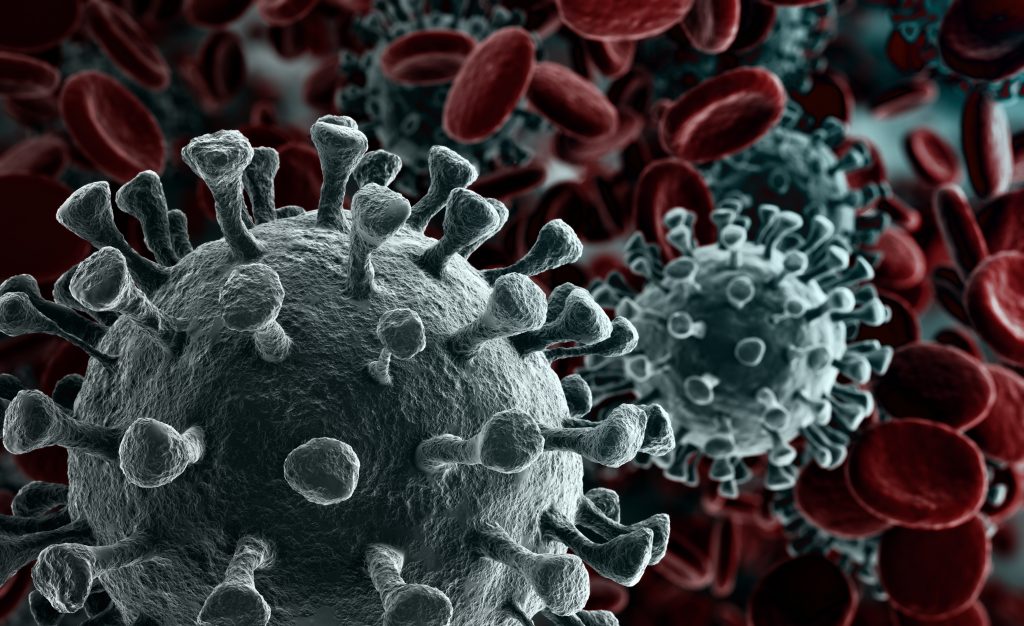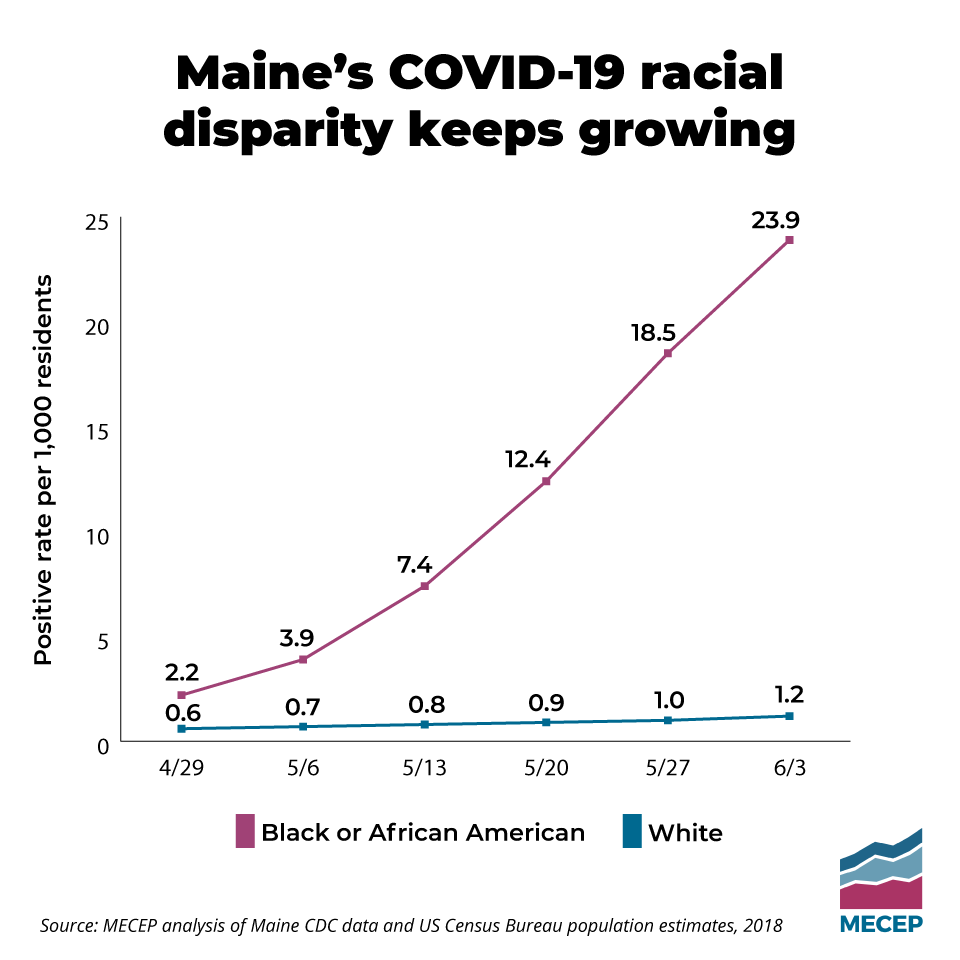Black and African American Mainers are now roughly 20 times more likely than whites to have contracted COVID-19, according to data released by the Maine CDC.
One measure of the virus’s spread is the rate of positive tests per 1,000 residents. This measure indicates how deep the disease has penetrated within the community. As the disease continues to spread, the rate has increased throughout the state.
The risk to Black and African American Mainers has been higher than the risk to whites since the virus arrived in Maine, and the disparity has only grown as the pandemic has rippled throughout our communities.
The positive test rate in Maine on April 29 was 3.7 times higher for Blacks than for whites. As of June 3, Black and African American Mainers were nearly 20 times more likely than whites to have tested positive for COVID-19. Black and African American people make up more than 22 percent of people who have tested positive for COVID-19, despite making up only 1.6 percent of Maine’s population.
This disparity is the result of pre-existing inequalities in our economy and in public health. For example, decades of discriminatory housing policies have concentrated families of color in communities with more air pollution. Greater health risk is also linked to our economy. People of color and foreign-born workers in Maine are overrepresented in essential industries such as groceries, health care, warehouses, and building cleaning and maintenance. Those workers have been at greater risk every day than workers who have been able to work from home during the pandemic. High rates of poverty among Maine’s Black residents is linked with overcrowded housing, making social distancing or quarantining extremely difficult.
Maine’s stunning racial disparity in test rates is one of the largest in the nation, according to data compiled by the COVID tracking project from those states and territories reporting the race of those who have tested positive. Vermont, South Dakota, and Maine are the only states where the disparity between white and Black residents is near or greater than 20 times. The next-largest disparity occurs in Minnesota, where Black residents are eight times as likely to contract COVID-19 as white Minnesotans.
Black Mainers are not only contracting COVID-19 much faster than white Mainers, they are also outpacing Black residents of most other states. For example, 2.4 percent of Black Mainers have tested positive so far, a significantly larger share of the Black population than in Coronavirus hotspots like Massachusetts (1.6 percent), Connecticut (1.4 percent) and New Jersey (1.3 percent).
The Maine CDC has been meeting with leaders in Maine’s Black communities, as well as advocates and representatives of service organizations. But the agency’s efforts do not appear to be slowing an increasing disparity between the risk Black Mainers face compared to whites.
This pandemic has proven that everyone’s health is inextricably connected. Every Mainer is at risk so long as any is, and the public health crisis cannot end if the coronavirus is still ravaging any part of our communities. State officials must focus prevention and relief efforts in a way that improves safety, health and prosperity for all people, including with efforts specifically focused on Black communities and others disproportionately impacted by COVID-19. In so doing, they can speed up the suppression of the virus that puts all of us at risk.





